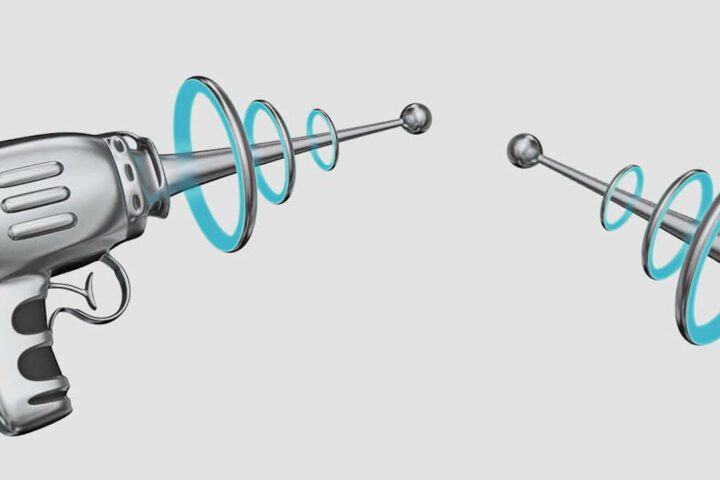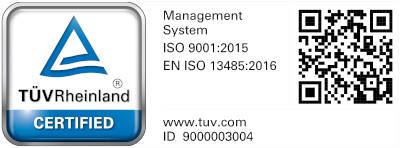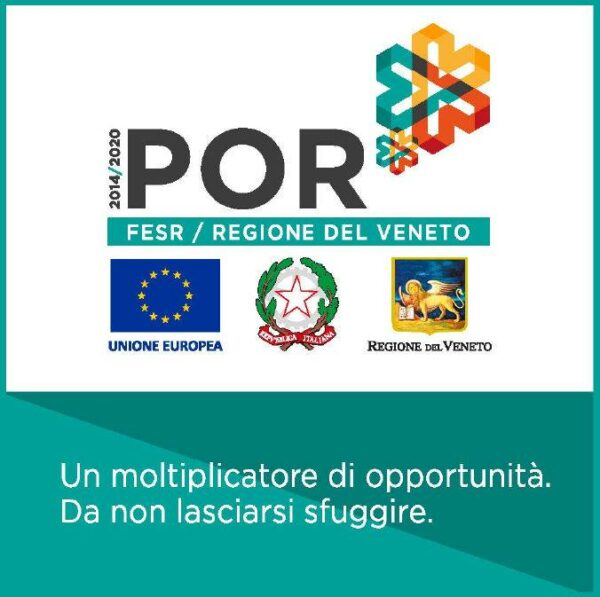Are you a person interested in finding out or better understanding a type of therapy, which is fast, effective and with enormous potential? Are you a physiotherapist who has just started practising and would like to have more satisfied customers, but your budget still limited? Are you a professional in the sector and you need valid reasons to promote your sales activity or an instrumental therapy specialist?
Then, this post is made for you!
Some sections are a bit technical but it gets easier. Are you ready? Read about it here.
In this post I will explain in simple words the key concepts behind laser therapy but, above all, I will tell you the real reasons why you, your patients and clients should absolutely take it into consideration.
Many years ago, before getting involved in marketing, I built dozens of laser therapy devices. I can assure you that they are incredible devices that conceal a very complex and fascinating technology and allow those who use them to have complete control over the therapy and the patient. The highly calibrated and constant energy dosage of the therapy and the precision in the application are aspects that you will be hard pushed to find in other types of treatment (well, at least not at these levels). This is without mentioning the speed of the sessions and the therapeutic benefit achieved in a short time.
Hold on a second!
Now let’s take a closer look at laser therapy
Laser therapy consists of the non-invasive use of laser energy to generate a photochemical response in body tissues that present a dysfunction or are damaged.
It can alleviate pain, reduce inflammation and accelerate the recovery of a wide range of acute and chronic diseases and conditions.
Its strength lies in promoting, in a relatively short time (compared to other forms of therapy) the improvement of functions and mobility. Especially in patients who suffer from severe pain and highly debilitating conditions.
The basic principle of therapy is to “bombard” body tissues with photons, stimulating the cells with a consequent increase in blood circulation in the damaged area and finally the reduction of pain.
Sessions last on average 10 minutes with noticeable results after 3-5 therapy sessions.
During treatment, you feel a pleasant sensation of warmth that stimulates the body to activate a self-healing process. In fact, thanks to cellular activity, this process continues to reduce inflammation and pain for up to 24 hours after treatment.
Since laser light does not penetrate through clothing (as opposed to PEMF therapy for example), it should be carried out directly on the patient’s skin. Depending on the conditions and the area to be treated, treatment can be either direct or indirect. The contact technique, usually performed using a special tip or probe, allows light to penetrate deeper into the tissues. Thanks to the movement of the tip, similar to a massage, laser light penetrates better through movement of the layers of skin.
Some technical info
This is where the technical part begins, aimed at those who cannot get enough of acronyms and numbers. Read on, or if you want, you can skip this part and go directly to the next paragraph, as this section is not essential to understand laser therapy.
The word LASER stands for Light Amplification by Stimulated Emission of Radiation.
The 3 properties that make laser light unique are:
- Monochromaticity: laser light is composed of a single colour, and, therefore, of a single frequency called wavelength. Different wavelengths penetrate the body differently, thus reacting at various levels with its structure and the fluids present within
- Coherence: all the light waves that make up the light beam oscillate with the same phase. The synchrony of the waves produces an effect equal to the sum of the single effects, unlike normal light whose waves travel with different phases. Laser light will, therefore, be much more effective while utilising the same amount of energy
- Divergence: the laser beam travels in one direction. The beam of light, therefore, even after many metres will diverge very little in contrast to the light of a light bulb that emits in all directions
One of the primary mechanisms of laser therapy is to use light energy to generate changes in living organisms. The terms Joule and Watt are used to determine the therapeutic dose of this energy.
Now I will explain how to dose the right amount of energy during therapy.
Be careful!
The energy dosage is measured in joules/cm2. One Watt is equal to 1 Joule/second.Thus, if a laser device provides, for example, 3 W of power and the treatment is one minute long (60 seconds), we have provided the patient with a total of 180 J (i.e. 3W x 60s).
To understand how much energy to give to the patient, we need to know the surface area to be treated. For example, if we need to treat a surface area of 10 cm x 10cm (100 cm2) for one minute at 3 W of power, the total dosage to be supplied will be 1.8 J/cm2 (i.e. 3W x 60s / 100cm2).
Why should you consider laser therapy?
These are some good reasons why you should at least take this incredible technology into consideration
Reduce therapy times: laser devices, especially high-powered ones, allow you to optimise sessions (hey, physiotherapist, I am talking to you) and get better results. Happy patients who recommend you. The power of word of mouth!
Provide high dosages: Some cases require high treatment doses. Patients in very bad conditions, with very severe pain, require very intense treatments that would require long application times with conventional therapies. With laser, you can deliver a lot of energy in a short time without the risk overdosing.
Extreme versatility: Not all sessions require a lot of power! Laser allows you to decide the intensity needed when you need it, by reducing it, for example, in cases that require treatments that are more superficial.
Feel the difference: Unlike other types of therapy, laser is felt immediately, during and after treatment. The warm sensation on the treated part is not only pleasant but also makes you feel good even later because, in addition to the therapeutic benefit, you can actual “feel” the effect.
Treat chronic pain: Laser therapy allows you to treat much deeper tissues than other therapies. Coupled with high and controllable power, it can really make a real difference in patients suffering from chronic pain.
Treatments on extensive areas: With its higher power, laser therapy makes it possible to treat large areas without running the risk of losing therapeutic intensity.
Achieve rapid results: Pain relief is experienced right from the first treatment. The physical principle of laser therapy and the high therapeutic power reduce the inflammation process more quickly, greatly helping those suffering from chronic pain.
Now let’s take a quick look at some types of treatment where laser therapy is particularly effective:
Knee laser therapy: knee problems are very common, especially among athletes or those who are inactive or overweight, as they overload this joint too much. Patellar tendinitis, ligament inflammation, and contusive trauma of various kinds are some of the main problems where the laser is able to act quickly by reducing the inflammation of the injured part and lowering the pain.
Shoulder laser therapy: in cases of muscular shoulder pain, laser therapy is excellent for tackling pain and inflammation. In this way, the patient is much more inclined to start the necessary manual and rehabilitation path with their therapist. Some of the main conditions where laser therapy is used include scapulo-humeral periarthritis and inflammation of the rotator cuff.
Laser therapy for the cervical area: Also in this case, treating the cervical area with the laser beam helps to reduce pain but above all, to improve neck mobility. This will prevent postural defects that in the long run generate pain and discomfort in other areas of the body.
Our high-powered laser therapy devices, such as the LA8000 and LA10000, are the ideal equipment for the professional treatment of the problems we have just seen. Being extremely portable with great performance, they are the perfect devices for professionals who are able to manage all the therapy parameters themselves.
In-home therapy: is it actually possible?
I know what you are thinking… This rather complex and specific therapy can surely ONLY be performed in highly specialised medical and physiotherapy centres with highly qualified personnel.
You are right, but only partially. Stick with me for a moment, I have almost finished, you might discover some new and interesting things.
Medical devices for laser therapy come in very different shapes, have various technical and functional characteristics and many other aspects that I will not cover in this article (you can find everything on the Internet).
Without writing an essay, the most important thing to consider in terms of therapy is:
- The wavelength of the laser diode, here is the sentence if you have not read it before “Different wavelengths penetrate the body differently, thus reacting at various levels with its structure and the fluid present within”. Some examples of wavelengths are 810 nm, 980 nm, etc.
- The emission power of the diode that can vary from a few mW (milliwatt) up to many Watts (even over 10).
These two parameters define the device class (e.g.class 3a, class 4, etc.) which in turn allows all devices below class 4 (less than or equal to 500mW) to be used for therapeutic use at home or other private settings.
And now the interesting part!
Laser therapy
Not all types of treatment and conditions require super-expensive high-powered devices.Most studies and the bibliography that confirm the effectiveness of laser therapy are carried out with devices that emit at most 500 mW.
Let’s talk about prices.A high-power laser can cost anything from 6,000€ to much bigger price tags.
A 500 mW class 3b laser can be purchased for around 1,000€. I know it is not a exactly cheap but it is a medical laser after all! A device that allows you to get the majority of the advantages and therapeutic benefits I have mentioned in this article. And the studies prove it!
Take, for example, our 500 mW model, which is ideal for laser therapy even for those on a limited budget.
Are you a therapist who has just started working and practises in different physiotherapy centres or at home? Think, with such a small investment just how many patients you can treat, in a short time, leaving them completely satisfied and ready to sing your praises.
Are you a dealer or a sales agent trying to enter emerging markets where price is key? Selling a professional laser therapy device at this price could make the difference for your business.
Obviously, as I reiterate in each article, the important thing is to be sure the device is reliable (CE marking, know the manufacturer, pre- and after sales support, etc.) as I explained in detail in this post.
The ball is in your court! I hope this information will help you consider this type of therapy and increase your level of professionalism as a therapist or a dealer in the future.And if you are an individual, you now know a little more about the subject.
Are you coming round to the idea of laser therapy?
I hope so! Well, we have come to the end and, as always, thank you so much for reading my post.
If you think what you have read has been useful, please share this article!







